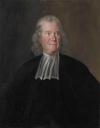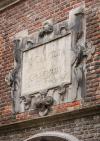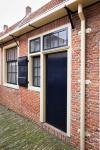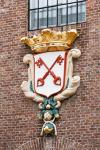The museumbuilding
5 min
The Caecilia Hospital was once a hospital and a pioneer in medical education; today, it serves as the historic home of Rijksmuseum Boerhaave.
The history of the Caecilia Hospital
In 1991, Rijksmuseum Boerhaave opened to the public at its current location, marked by much ceremony and speeches from prominent figures. After years of making do with cramped quarters elsewhere in the city, the museum finally gained a space befitting its national collection of masterpieces spanning five centuries of science. The museum was housed in the Caecilia Hospital, a complex of buildings arranged in a square around a central courtyard. It was fitting for the museum to be located here, as Herman Boerhaave, after whom the museum is named, taught his students bedside medicine in this very place in the eighteenth century. At the time, the Caecilia Hospital served as a hospital for Leiden's poor, with some patients doubling as teaching material for the medical faculty.

A former Convent
The history of the Caecilia Hospital goes back much further than the time of Boerhaave. It began in the late Middle Ages as the St. Caecilia Convent, one of several religious buildings in the area, including the St. Elisabeth Convent, the St. Ursula Convent, the St. Michael Convent, and the St. Agnes Convent. Established in 1414, the convent was inhabited by Augustinian nuns who cared for the sick and elderly as part of their religious duty to provide charity. The convent was an integral part of the medieval urban care system, which was predominantly managed by religious institutions.
The convent comprised a central three-story building, a smaller chapel, and several auxiliary structures. There were also adjacent cottages and, possibly, a vegetable garden.

Convent to hospital
In 1574, after Leiden transitioned to Protestantism, the possessions of the Catholic Church, including monasteries, were transferred to the city council. This marked the end of the Catholic Church's role in healthcare and social welfare, which was subsequently centralized under municipal administration. The Catharina Hospital became the city's primary hospital.
However, in 1596, it was decided to establish a satellite facility to accommodate the growing city, specifically for patients with contagious diseases, the elderly, and psychiatric patients. This new facility was housed in the former St. Caecilia Convent, located somewhat isolated on the city's outskirts—an essential feature given the infectious nature of some diseases.
By 1600, the building was in use, featuring two large hospital wards on the second floor, each containing twenty beds and large windows designed to purify the air. On the ground floor, small cells housed psychiatric patients. These cells had no windows but included a hatch for meals and a drain for waste.
In addition to the hospital wards, there were smaller rooms and cottages for the elderly, who received daily meals from the hospital kitchen. The courtyard was surrounded by buildings and included a vegetable garden.

Bedside education
In 1636, practical training began at the medical faculty, with patients in the hospital serving as teaching material for students. This made the Caecilia Hospital a pioneer in medical education in Europe.
After Boerhaave’s era, the emphasis on practical teaching in the hospital diminished, and in 1799 the university decided to establish a new academic hospital elsewhere in the city. Nevertheless, the Caecilia Hospital continued to function as a municipal hospital until 1852, after which it was repurposed as a workhouse for marginalized members of society.
Following World War II, the complex was purchased by the Dutch government, and after restoration, it became the home of Rijksmuseum Boerhaave.
Visitors enter the museum through an entrance building that was originally a municipal warehouse but now serves as the museum café and foyer.




